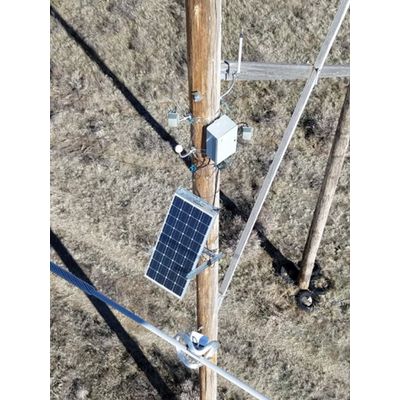

- Home
- Companies
- Kadtronex Ltd
- Products
- Real Time Remote Power Line Monitoring

Real Time Remote Power Line Monitoring
THE RT-RPLM is an advanced cloud-based temperature monitoring system for power transmission lines. The solution has great benefit in helping the grid utility operator to remotely and continuously monitor the core cable temperature along with other parameters in an easy, cost-effective and reliable way. Accurate measurement of cable catenary temperature with our Dynamic Loading Response (DLR) algorithm and temperature sensor, can provide 15-28% more power for maximum power transfer.
our RT-RPLM system takes the guesswork out of dynamic ratings. Whereas conventional systems attempt to predict the effect of increased loading on overhead power lines, the system measures the actual temperature of the conductors in real time, enabling increased load to be applied safely and efficiently.
Our system is completely passive sensors, (no electronics), which means they are robust and can withstand the emergency temperatures (such as 250°C) that are permitted for short periods with ACSR cables. No electronics, no wires and no batteries. RT-RPLM sensors are durable, easy to install, and maintenance free. They can be applied to any phase of any AC or DC line of any voltage.
- Increased transmission system efficiency.
- Decreased or deferred capital costs through improved utilization of existing assets.
- Decreased system congestion costs.
- Increased situational awareness and operational flexibility of the transmission system.
- No limit to conductor voltage
- Measures conductor temperature in real time.
- Measures one phase or all three.
- No Electronics. Sensors do not require a power source or active electronics.
- Easy, quick One-Bolt installation without interrupting service.
- Operates in a high electromagnetic field environment.
- Backhaul communication options.
- Compatible with all power line configurations –AC, DC, multiple phases, any voltage, any line geometry.
